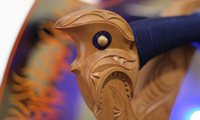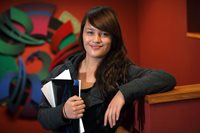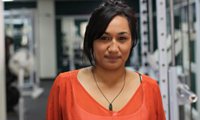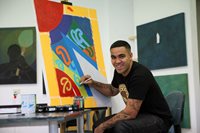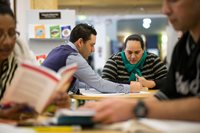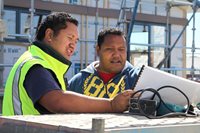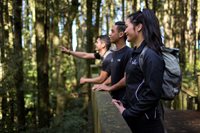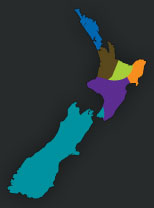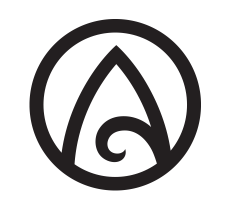Nephi Tupaea’s artistic flair was clear to see when she came third in a wearable arts competition as a 14-year-old.
“I designed and made a Marilyn Monroe printed 1960s French dress...it was based on some curtains I saw at home,” says Nephi (Ngāti Tipa, Ngāti Koata, Ngāti Koroki Kahukura).
Nephi has since evolved and diversified her artistic talents moving from her winning beginnings to design jewellery, clothing, costumes and textiles.
She won the Supreme Award for costume design at Auckland’s Pasifika Festival in the early 90s and other works of hers have featured in museums.
But after living in Australia for more than 20 years she returned home to Heretaunga (Hastings) to “dive in to the tikanga of the Māori art world” and study towards a Toi Paematua - Diploma in Māori and Indigenous Art at Te Wānanga o Aotearoa.
Tauira (students) on the 38-week programme complete practical projects, and strengthen their creative processes through experimenting with different media. The programme is designed to enhance and develop specialist skills in Toi Ataata – the visual arts.
They also learn to use different mediums such as paint, print, digital, clay and other materials.
For Nephi, the experience so far has been amazing.
“It really helps when Sandy Adsett is the principal kaiako,” she says.
“I’ve never been to a school that’s so kaupapa-driven and with whānau support. This place feels more like an art workshop than a school and the amount of talent here is just overwhelming.”
Nephi is working on her latest piece, a beautiful portrait of a friend Rosanna Raymond wearing a tapa dress called “Dusky Maiden with a tusk earing”.
Looking at her work, it’s clear she’s also a talented painter, but Nephi admits to a steep learning curve while on the programme.
“I didn’t even know what a colour palette was in terms of painting, I really had no idea. You can take one colour and actually make 20 colours out of it. It was really interesting to learn.”
“Also just applying the amount of paint onto your brush – there’s a technique for that and it’s known as loading. Also the amount of water you apply to paint. You don’t want your painting to have ripples – it’s the sign of an amateur painter.'


